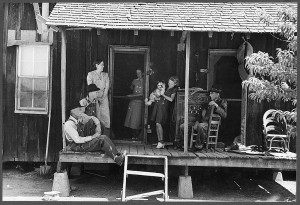
The Atlantic’s website “Cities” argues that some urbanist buzzwords should be retired, including placemaking, gentrification, and smart growth. A good proposal, even if the Atlantic is itself responsible for the proliferation of many the self-same buzzwords—the website is subtitled “Place Matters.” Buzzwords are everywhere. Trouble in the Iraq war—what we need is a surge. No sooner did Obamacare falter than we learned that there were navigators, who would fix the problem. The right buzzword comes first; reality will follow. Buzzwords seem to emerge from two considerations: marketing and media. If you have an untested idea or hypothesis, such as smart growth or creative class, providing a label, preferably a catchy label, gives the idea an air of legitimacy. After all, if it has a name, it must be real. In our Twitter culture, a colorful name also saves time in lengthy explanations. This appeals to the media, since a new name can stand in for actual news. Would Occupy Wall Street, or the Tea Party, have gotten as much coverage without a colorful name? Which brings me back to the Atlantic list. Placemaking is a term often used by architects and urban designers, and it implies that a sense of place (obviously a good thing) can replace a sense of placelessness (a bad thing), if only the design suggestions of the self-styled placemakers are followed. But is a sense of place really a function of design? It may be for the tourist or the stranger, who experiences places briefly. Nothing is as disappointing to the tourist as visiting a place that looks like other places, and most of the American built environment is superficially similar. But as the late J. B. Jackson long ago pointed out, that environment is full of meaning, for those who use it. A strip mall may not look like much as you drive by, but for someone who attends the Judo school, or goes regularly to the beauty salon, it is a real place. Conversely, most attempts to instill a sense of place through physical design end up looking like themed restaurants with ersatz “mementos” on the walls. (The most blatant of these is the “Cheers” airport pub chain.) I shop in a banal Pathmark, but I recognize some of the staff, I know where things are, it is familiar. The supermarket has a small place in my life, among the stirring places (the concourse of 30th Street station), the lyrical places (the Wissahickon), and the cherished places (our house). In other words, a “sense of place” is less a physical attribute than an individual experience. The old folk adage puts it well: Be it ever so humble, there is no place like home.

The standardization of “mixed-use” and “transit-oriented development” is also leading to bad planning.
The buzzwords “21st century library” are being used by the Cuyahoga County Public Library Board to justify the sale of the building that has been the library for 60 years. The building, the Telling Mansion, is on the National Register of Historic Places and is an Ohio Landmark. They sold it December 18th to one man, despite the 18 month long community effort to stop the sale. We are still in litigation. We are heartbroken.
Please consider the blogging about your vision of the “21st Century Library” and on the monstrosities they are putting up in our area because we need “21st century libraries”, whatever those buzzwords mean.
Below is the link to a wonderful blog post about Telling Mansion by a local architect, Dan DeAngelo:
http://thecivicartcleveland.blogspot.com/2013/03/abandoning-our-historic-character.html
Below is a link to a 24 minute video (it has a slow start but is well worth the time) on YouTube. The library made this video, yet a few years later, sold our beautiful historic building for pennies on the dollar. http://youtu.be/N_si8JxiDdc
Cuyahoga County is the county in Ohio that contains Cleveland. We are a poor and declining area and are heartsick at the loss of this public wealth, history and beauty. I could go on and on.
Can you do anything to help us in any way?